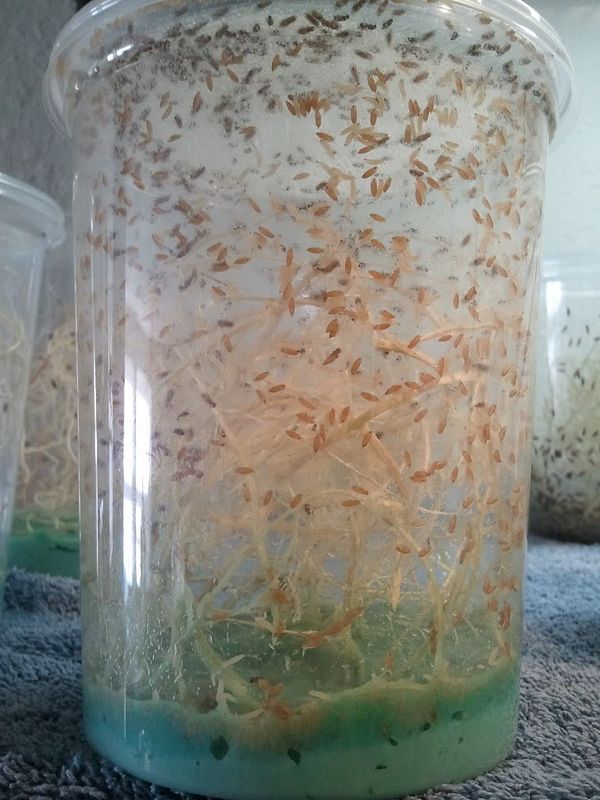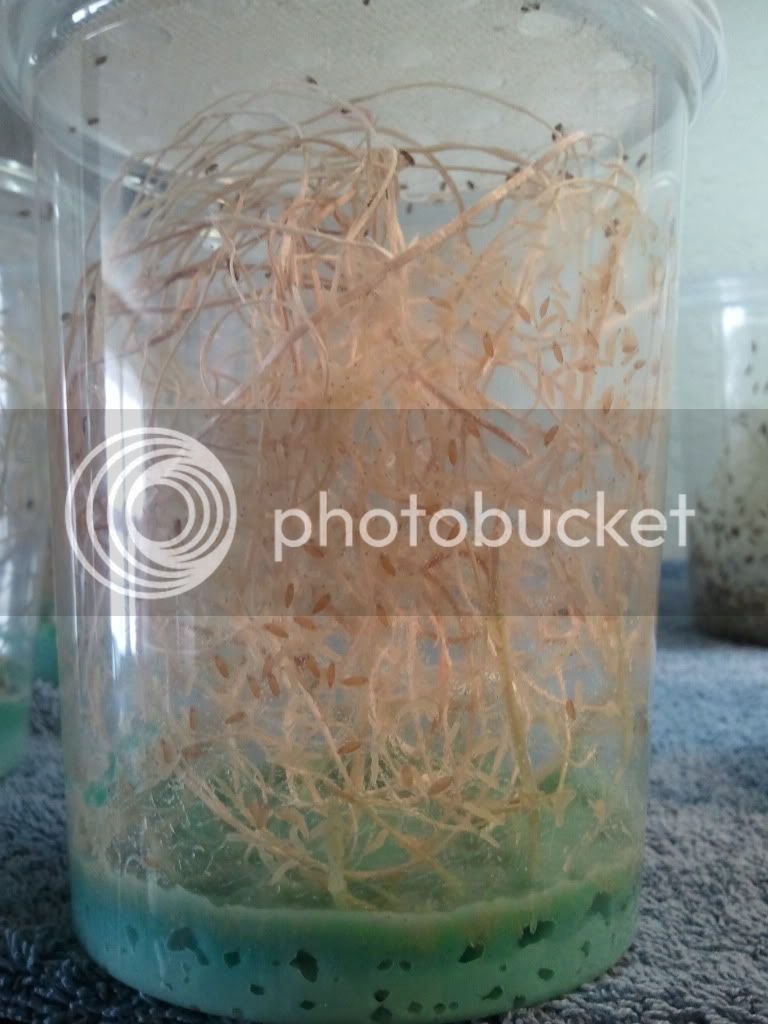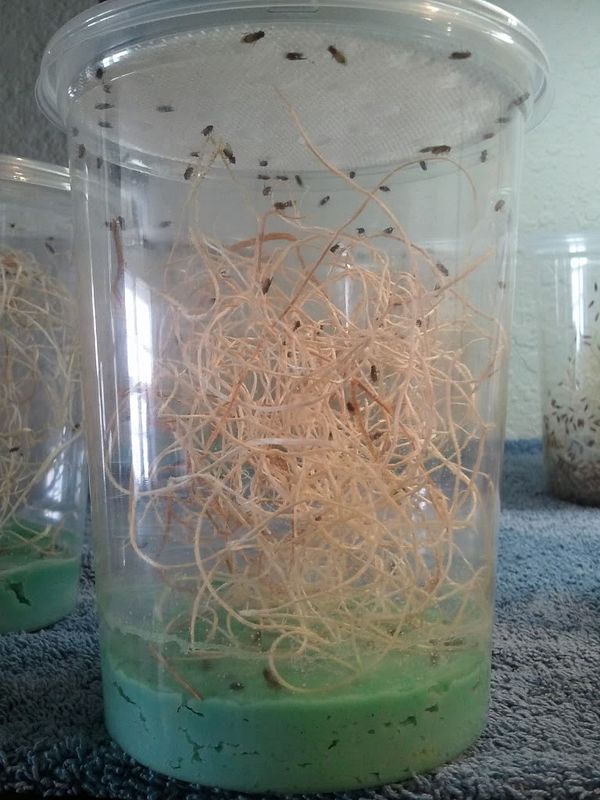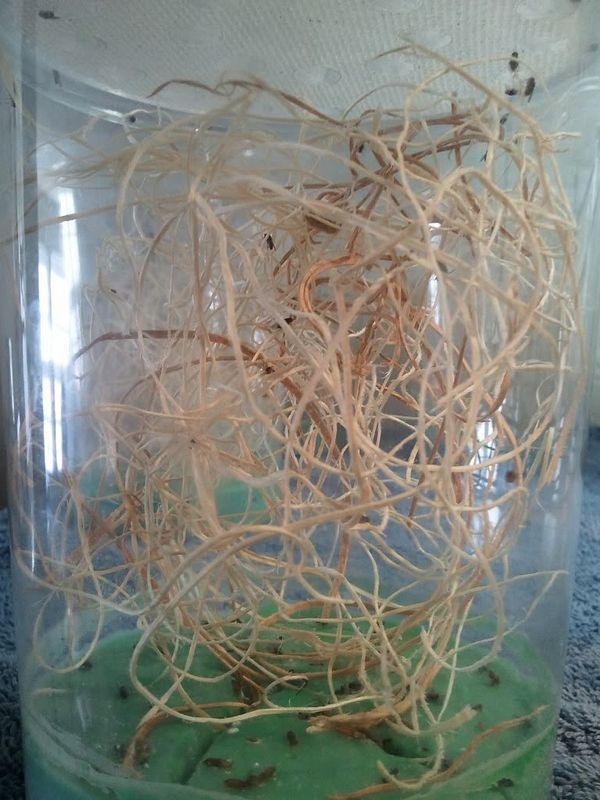Methyl paraben can be purchased reasonably at Josh's Frogs. Anyone who uses any of his prepared FF mixes is using a paraben mix, and Carolina uses both mold inhibitors in their mix according to a young woman in their fly lab with whom I talked yesterday. Paraben does, indeed slow maggot development, but not by much more than a day, in my experience. Since instractions like "1/2 tsp to a culture" are not of much help iif you use different amounts of medium, a good rule of thumb is to use 1TBS (15ccs) to 71/2 cups of your mixture.
Yeast and "molds" are both fungi, but grow rather differently. Yeasts produvce (asexually) by budding, and very cute they are. Molds produce powdery spores, and I suspect that it is these that are vulnerable to paraben. I have found that by adding variable amounts of paraben to a yeast mixture and then testing it by proofing with sugar water, it is possible to kill the yeast with it, but in smaller amounts (much smaller!) it inhibits mold growth but not the yeast growth or, of course,the bacteria that are another source of live protein, though they can be killed, unless they are acidophylic (acid loving), by bathing them in vinegar.

Raising and playing with ffs can be fun, and here are two productvely fun things that you can do with them. Instead of measuring out 50 flies or whatever per cup (no joke if you're testing nine variables!) Just put all of the pots in a 12" cube and let the ffs have at 'em! That way, if some cultures don't yield and others do, you will know that it is because of the medium, not because the ffs were raised too close to Chernobyl.
Here's a fun and fairly accurate way to compare the yields of digfferent pots that you re comparing, without trying to count all of the flies that emerge (not fun at all!). Draw a 1" square, using a template and a felt tip. close to the top of the 32oz pot that you are using, on the outside of the plastic. Draw another one a little lower after rotating the cup a little and a third close to the bottom and a little further round. Do the same with all the others, drawing the squares at aproximately the same places and using the same template.
Now, when you want to compare yields, at least of pupae, all you have to do is count the pupae in those three squares. it won't tell you how many pupae there are in sum, but you will be able to compare the yields one to the other. Ain't that great?







